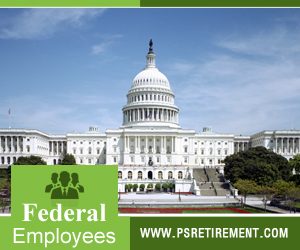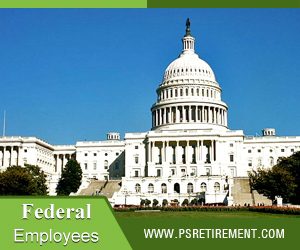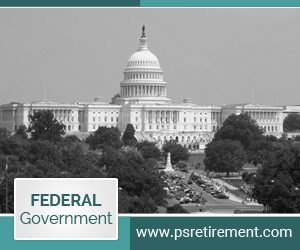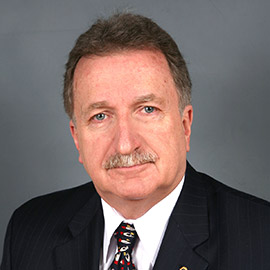federal employees
Federal employees are the qualified individuals that serve the federal government. Their services play an important role in the running of the country as well as in the economy and they are compensated well for their efforts via retirement plans and allowances.
TSP Finds that New Workers Are Investing More in Age-Appropriate Lifecycle Funds. By: Kathy Hollingsworth
/by leslie "kathy" hollingsworthThe agency that oversees the Thrift Savings Plan (TSP) has noticed a difference in the investment patterns of new workers. The agency found that these workers are moving their default investment fund from the government securities (G Funds) to age-appropriate lifecycle funds (L Funds). The TSP recently analyzed investor behavior and found that younger workers are investing more in L Funds.
The agency found that workers below the age of 30 invest 63% of their assets in L Funds. Those between 30 and 39 invest around 39% of their assets in the funds. In addition, workers between ages 50 and 59 invest 20% of their assets in the funds. Those between age 60 and 69 invest 17%, and those who are 70 and above invest 13%.
In its report, the agency stated that the 2015 shift of default investment from the G Fund to age-appropriate L Funds had changed the fund-utilization ratio. It also stipulated that the beliefs about the advantages of utilizing the L Funds also constitute a factor.
The report also stipulated that workers who have been using the TSP for longer have more investments in the G Fund than newer participants. Those between the age of 60 and 69 have 38% investments in the fund. Workers who are 70 and above have more assets in the G Fund, with an investment of 43%. On the contrary, only 9% of those under 30 and 18% of those between 30 and 39 invest in the fund.
The report stated that participants focus more of their investments on income-producing assets as they approach retirement. This factor, it stated, could be responsible for the new investment patterns. The agency also stated in its reports that fewer young workers are investing in the G Fund. In 2014, the youngest participants invested 42% of their assets in the G Fund.
The high percentage had prompted the agency to change the default investment fund from the G Fund. The agency explained that the fund is guaranteed against investment losses but has a lower growth potential than other funds. The change has the intended effects, as shown by the recent survey. Fewer younger workers are investing in G Funds, just as the agency wanted.
Though participants can change their default investment fund and amount, the agency said many participants never bother to do that.
Only FERS employees were considered for this survey.
TSP’s I Fund To See A Much Brighter Future With FRTIB’s Change
/by AdminIn November 2017, the Federal Retirement Thrift Investment Board option to expand its I Fund, which included the following: small-capitalization businesses, emerging markets, and Canada.
You can read the full plan by checking out their November meeting minutes. In a nutshell, the board decided that in 2019 the index the I Fund follows will change. The hope is that this will lead to better risk-adjusted returns for the future.
In June 2017, Aon Hewitt, a consulting firm, had spoken with the board, recommending they make the change. The Board agreed to look at what the implications would be in doing this and would address the matter sometime in the fall.
How Is The I Fund Going To Change?
Should the TSP follow through with this planned change, the I Fund will no longer watch the following indexes – Far East Index, Australasia and the Morgan Stanley Capital International Europe. Instead, the index it will follow is the Morgan Stanley Capital International All Country World Ex-US Investable Market Index.
What will this change allegedly do?
Simply put, it would increase the I Fund’s scope.
For instance, the Far East/Europe index the I Fund is currently following has more than 24 percent of the size financed in Japan, with 17 percent financed in Europe. This is a more than 40 percent investment in two leading countries. The seven countries, comprising of 80 percent of the I Fund index, are:
• Australia
• France
• Germany
• Japan
• Netherlands
• Switzerland
• UK
The I Funds’ All Country index is the one the fund will end up following, which only has between 12 percent and 17 percent invested in both the U.K. and Japan. The other countries make up 60 percent of the fund. By making this change, it would mean exposure would be given to South America and Asia and would nearly double the number of countries it will invest in.
Currently, the Far East/Europe index takes into consideration just mid-to-large-sized businesses, which makes up 85 percent of the respective market capitalizations. The All-Country index comprises any sized company (or 99 percent of the market capitalization).
Everything within the TSP funds, except the G Fund, is managed by BlackRock Inc. The company, along with its iShares ETFs charge about the same expense ratios for Far East/Europe and All Country ETFs, which means there shouldn’t be that big of a change happening to the I Fund expense ratio.
What Will The Value Of Emerging Markets Be?
Obvious changes occurring in the I Fund are the additions of small companies and Canada. However, the most notable difference is the inclusion of emerging markets such as Brazil, China, India, South Korea, Thailand, etc. Up to 25 percent of the All Country index is made up of emerging markets; they are not even considered in the Far East/Europe index.
While the “I fund” was regarded as the best TSP fund in 2017, with 25 percent yearly returns, it narrowly missed a 37 percent returns from the emerging markets in that same period. While the performance change is significant for each index every year, there are some indicators that the faster-growing markets will do well over the next ten years. Investors with no exposure are likely to be disappointed if they don’t invest in them.
The International Monetary Fund expects developed economies will see a two percent or less gross domestic product increase in the next five years. Japan, which is the most significant player of the Far East/Europe index, is anticipated to grow less than one percent a year because of two reasons – aging population and declining population. Emerging markets, however, are likely to develop five percent GDP every year.
PricewaterhouseCoopers believes the same thing is to occur. A look at their 2050 outlook notes that the top seven emerging markets were half the size of the top seven markets in 1995 and are currently the same size in 2015. They are thought to be two times the size in 2040. The reasons for this significant change include rising GDP per capita, larger population sizes, and quick population growth.
Along with all this, the Far East and Europe index have had a seven percent exposure in the technology industry, but the MSCIs Emerging Markets index has seen a whopping 27 percent exposure. Thus, the joint All Country index has had a 12 percent exposure to the technology sector.
Adding these economies to the “I fund” would ensure similar effects – the exposure of the technology industry would double.
With exposure like this, one would assume emerging markets would be valuable. In 2007, that happened. According to many metrics like the market-capitalization to GDP- ratios and price-to-earnings ratio, this market would be far more valuable than European or U.S. stocks.
While the yearly returns for the emerging markets haven’t done so well, their corporate earnings and economies have grown. Still, it appears investors see flat returns.
As it stands, emerging markets are still rather valuable even with higher growth expectations for the long-term. Of course, they don’t follow the same indices as other markets, and they trade at lower values than the markets in the U.S., gauging by price-to-book and price-to-earnings.
Developed international markets have similar low values but have extremely low growth in earnings.
The MSCI indices have comparable numbers, with emerging markets seeing low assessments and quicker anticipated growth than international and U.S. stock markets.
What Does It All Mean?
While investors should have international exposure, the kind of index they follow plays a massive role in how well or poor their investment is. Most of them don’t understand how intense the international funds are.
Look at the current set up of the I fund shows that it’s reasonably valued for the short-term, but, looking at the long-term view, it’s liable to miss out on worldwide growth. The heavy concentration of the I fund is focused in Europe and Japan, and adding the emerging markets, Canada, and small companies changes it very little but could have a tremendous impact in the long range.
With the FRTIB’s choice to use the All Country Market Index, the I Fund is going to see more exposure to geographic diversification and worldwide growth. Thus, TSP investors may end up with a much brighter future.
Federal Employees Spill the names of best Employee Engagement Agencies in the FEVS Survey
/by Matt PierceThe results of the FEVS survey conducted on federal employees by the OPM are out. It has mentioned which large and small agencies are at the top with regard to employee engagement. It also revealed which small agencies are at the top. The results also name the large and small agencies that have improved the most in keeping the employees engaged.

Topmost Large Agencies Named by Federal Employees
The topmost large agency in which got a score of 82 percent is the Federal Trade Commission. The next is NASA with 80 percent which is closely followed by Office of Management and Budget at 78 percent. Then comes the Federal Energy Regulatory Commission and Nuclear Regulatory Commission that scored 77 percent and 74 percent respectively. The scores were offered as per the federal employees’ opinion.
Small Agencies Making it to the Top
As per the data released by OPM, 92 percent was the score at Marine Mammal Commission and it was 90 percent at the Occupational Safety and Health Review Commission. The U.S. Trade and Development Agency has succeeded in scoring 90 percent while the Federal Relations Labor Authority managed to get 84 percent score. Overseas Private Investment Corporation has also made it to the top 5 with 83 percent score.
The Improvement
The survey data also reveals that 7 big agencies have managed to improve their employee engagement scores in the last year. The score of Securities and Exchange Commission was boosted by 5 percent. The scores of Federal Trade Commission, Environmental Protection Agency, Housing and Urban Development Department, National Archives and Records Administration and the Equal Employment Opportunity Commission increased by 4 percent each. The Energy Department saw the maximum boost of 14 percent.
The small agencies which managed to increase their employee satisfaction score include the African Development Foundation and National Endowment for the Arts that gained an increase of 18 percent. The Chemical Safety and Hazard Investigation Board gained 14 percent while the Occupational Safety and Health Review Commission gained 13 percent. The Office of Special Counsel and the International Boundary and Water Commission gained 12 percent each. The Postal Regulatory Commission ended up gaining 10 percent.
Conclusion
After seeing the aforementioned results based on the federal employees’ opinion prove that the small agencies are doing better improvement as compared to the larger ones as more small ones have managed to improve their percentage in double digits.
Federal Employees’ Families to get Better Death Benefits Thanks to Obama
/by Matt PierceThe Obama government has introduced a new proposal that benefits the families of dead federal employees’ if the employee dies on the job. The amount of two types of death benefits will be increased soon. The death benefits payment is done by the agencies’ discretion, according to OPM. It is estimated that about 3000 employees have been killed since 1992.

The Need for Increasing Federal Employees’ Death Benefits
There is a need for increasing the death benefits of federal employees because one of them was increased two decades ago and the other was increased five decades ago. Now, the amount of these benefits must be adjusted as per the current inflation and living expenses. The raise would help the families of the federal employees who died to stay away from financial burdens, says OPM Acting Director, Beth Cobert.
The Benefits
The first benefit is the gratuity paid for the death of a person in the line of duty. This benefit would be given in cases of a criminal act, terrorist attacks, retaliation for carrying out official responsibilities and facing extreme risk while performing a job. Currently, the members of families of the feds who die get a gratuity of $10,000 and this amount was fixed in 1997. Now, this amount would likely rise to $100,000.
The second benefit is a funeral allowance of $800 which was set in 1966. It will be given for an employee who died in the line of duty. This amount has been increased to $8,800.
Agencies’ Power
OPM has stated that as per the current policy, the payment of such benefits varies from one agency to the other because there are varied rules in the employing agencies. In some cases, the amounts are even reduced due to various reasons.
The Numbers
OPM did not seem willing to share the number of federal employees who die every year and are eligible for either or both of these benefits. In 2011, the Congress enacted a law as per which the families of federal employees who died in the line of duty were given American flags from the agencies. Sponsors say that nearly 3,000 feds have died in the line of duty since the year 1992. The number includes those employees who died while being on the job due to criminal acts, natural disasters or even terrorist attacks.
Federal Employees Donate Loads of Foods for the Needy in 2016
/by AdminFederal employees across the nation have donated a lot of food for the needy this year. The amount is almost double than the last year figures. Experts feel very proud of the donations made by the feds and are hoping that the food will help people in the community who really need it. The donations were made voluntarily and via the local food banks.
 How the Federal Employees Donated Food?
How the Federal Employees Donated Food?
The federal employees who were eager to donate food did it as a part of the Feds Feed Families (FFF) campaign that was launched and organized by the U.S. Department of Energy. The amount of food donated this year is about 50.001 pounds which is almost double the amount which was donated in 2015. The food was donated by the employees belonging to the National Nuclear Security Administration Production Office.
The Expert Opinion
Geoff Beausoleil, who serves as the NPO Manager seemed delighted by the fact that the NPO employees have donated such large quantities of foods. He said that the NPO employees have stepped up to the challenge and they have made considerable donations to the worthy cause. He also added that he was very proud of the result of the campaign and what it will mean for people who are in need in the communities.
The Key Players
The NPO FFF donations are contributing to the efforts made by the Second Harvest Food Bank of East Tennessee as well as the High Plains Food Bank, Amarillo, Texas. The people who led the efforts were also mentioned. Betty Diden representing the NPO office at the Y-12 National Security Complex and Lisa Vickers representing the NPO office at the Pantex Plant were the key leaders of the FFF program. They led most of the efforts and encouraged people to donate freely.
About FFF Campaign
For those people who don’t know about the campaign, the FFF campaign is a voluntary effort carried out by the federal employees across the nation to offer non-perishable food items to the food banks in their locality. This effort was initiated in the year 2009. Since then, the American families have collected and donated millions of pounds of foods to support the needy families across America. The people who get the most from these sorts of campaigns are thousands of elderly people, children and handicapped individuals who are unable to meet the basic need of food.
Biggest OPM Hack Compromising Federal Employees Data Was Avoidable
/by AdminA recent report has stated that the attack on OPM was avoidable. The agency knew that it was being targeted and yet failed to secure the millions of federal employees data. The report also says that the agency failed to notice that it was dealing with a sophisticated enemy who probably found it simple to steal vital employee information. It has been confirmed that the attack originated in another country.

The Report on the Biggest Cyber Attacks on Federal Employees Data
The report on one of the biggest cyber attacks on federal employees data was released by House Committee on Oversight and Government Reform recently. It states that OPM had been warned that it was a target and yet the agency failed to take correct preventive actions. This ensured that it was more vulnerable to the attack.
An Interview Statement
In an interview with CNN, the Chairman of the House Committee on Oversight and Government Reform, Jason Chaffetz stated that in the report it is clearly mentioned that once the OPM knew that an attack was in progress, it didn’t take the right steps.
The Overseas Attack
The Republican representative from Utah did not confirm whether that attack came from China, which is being rumored for several months now. He does admit that it was an overseas attack. He didn’t reveal much by pointing out that the name of the country where the attack originated was classified information.
Reason Behind the Attack
Chaffetz said that the attack was organized and executed because the information garnered through it was very valuable to other countries. The data that was hacked revealed which federal employees had security clearances and who was dealing with the most classified information. It also exposed the vulnerabilities and fingerprints of those who were in charge of the classified data.
Underestimating the Enemy
The report also stated that OPM underestimated its enemy by not realizing that the enemy had sophisticated weapons and was very persistent. It also says that OPM had been warned consistently for years before the attacks that it was a target. It failed to recognize the importance and genuineness of being a target. If the agency had taken the threats seriously and implemented some basic security controls, the attacks would not have made the information of federal employees so easily accessible.
Phased Retirement not Popular among Federal Employees
/by AdminRecent data revealed by the OPM has highlighted that the phased retirement option offered to federal employees is not too successful. The number of workers who have opted for it is too low even despite the fact that the number has increased in the last few months. Phased retirement has been allowed by OPM since 2014 but it has not been implemented in all the agencies yet.
 How Many Federal Employees opted for Phased Retirement?
How Many Federal Employees opted for Phased Retirement?
As per OPM data, only 90 federal employees have chosen to take the route of phased retirement until August 15, 2016. The agency revealed this information after a query was raised by Federal News Radio website. The agency also shared the fact that the employees from the Environmental Protection Agency and NASA showed a lot of enthusiasm for the program.
What is Phased Retirement?
Phased retirement is a program according to which the federal workers who are eligible for retirement are allowed to sign up for a program as per which they work part-time in their positions and collect half of their salaries. They also get only half of their accumulated retirement annuities. When the phased retirement of a federal worker is approved, he or she is required to spend 20 percent of their time in mentoring other employees who are supposed to take over the role played by the employee who is enjoying phased retirement.
The Law
The law was passed in the year 2012 by the Congress but the bill was approved by OPM at the end of 2014 only. The people eligible for the program would be 31 percent of the federal workforce by September 2017 and yet the number of people applying for the program is too low.
The Improvement
On January 31, 2016, the number of feds choosing this program was just 31. Now it is 90 which show some improvement over time. In January the data was unearthed by Government Executive website. Though the improvement is commendable, the numbers are still a disappointment for fed organizations that have supported phased retirement in the past.
The Choice
A reason behind the low number of federal employees in phased retirement program could be the fact that the federal agencies have complete control over whether they need to adopt the program or not. The Social Security Administration has not given the option to any of its employees.
FEGLI Open Season Begins for Federal Employees’ Benefit
/by AdminThe federal employees who have wanted to join FEGLI or increase their FEGLI coverage can now easily do so as the open season with regard to it has begun. This will not apply to people who have retired. The last open season occurred in 2004. Experts say it’s high time for employees to reassess their insurance.
 Details on FEGLI Open Season for Federal Employees
Details on FEGLI Open Season for Federal Employees
The FEGLI or Federal employees’ Group Life Insurance’s open season has begun and it would continue throughout September. As a part of this phase, the federal employees can enroll themselves for this plan or they can change the coverage.
The FEGLI Data
As per the Office of Personnel Management, about 2.4 million feds have been benefiting from FEGLI. It includes employees of the semi-independent U.S. Postal Service. This number is 89 percent of those who are eligible for the plan.
About FEGLI
Some people might not be aware of what FEGLI is. It is a term type insurance that allows a person to have basic coverage equal to the salary of an employee rounded to next $1000 plus $2000. It has an option for $10,000 in additional coverage. Additionally, it has an option for up to five times the salary of an employee rounded to the next $1,000 and an optional coverage of about $12,500 for each dependent child who is less than 22 years of age and an optional coverage of $25,000 on the spouse of the employee.
The Costs
The premium an employee has to pay varies by age. The enrollees need to pay the full cost. The exceptions are agencies paying two-thirds of the cost of basic insurance or the USPS paying the full cost of that coverage for all its employees. It is pertinent to add here that some premium rates increased and decreased in January this year due to claim patterns.
The Last Open Season
The last open season was in 2004 which reiterates the fact that FEGLI open seasons are rarer when compared to the vision or dental insurance programs or the federal health insurance programs. Officials state that in the prior open season about 146,000 changes took place. These changes were related to increases in existing coverage and new enrollments
Expert Advice
The OPM’s Assistant Director for Health Care and Insurance, Alan Spielman believes that the federal employees should look hard at and reassess their insurance premium as soon as possible to make the most of FEGLI open season.
Obama Initiates the Process of Offering Pay Raise to Federal Employees
/by AdminPresident Barack Obama has exercised his authority and offered a 1.6% pay raise to federal employees that will be effective on January 1, 2017. He wrote a letter to the Congressional leaders regarding this. The federal employee unions are not happy with the pay raise as they expected a higher rate than what has been approved by Obama.
 The Letter Regarding Pay Raise to Federal Employees
The Letter Regarding Pay Raise to Federal Employees
In the letter to the congressional leaders, Obama mentioned a few vital things. He announced that across the pay increases would be 1 percent. He also stated that the decision regarding alternative pay plan for locality payments under 5 U.S.C. 5304a will be made by him until November 30, 2016. He confirmed that varying locality pay increases will be about 1.6 percent of the basic payroll of an employee and that is consistent with the assumptions made in 2017 budget.
Obama added that these decisions would not largely affect the governments’ ability to hire and retain talent. He also made it clear that all the uniformed service members will get a monthly basic pay increase that comes to 1.6 percent.
Other Developments
It is pertinent to add here that the raise is just .3 percent more than the last fiscal year, i.e., 1.3 percent. In another development, the OPM has asked the chief human capital officers of all the agencies to submit requests for raises in special areas and job positions that are hard to fill. The request was made earlier this month.
High Expectations
Several members of the congress, employee unions and organizations have claimed that the pay raise is below their expectations. They have been protesting against it since President Obama shared the initial budget request.
Unions’ Stand
The National Treasury Employees Union said that the pay raise is too low especially after the impact the pay has had in the last few years. The organization also pointed out the low pay raise affects the agencies’ ability to hire and retain skilled federal employees. The American Federation of Government Employees also stated that that President Obama has acted while the Congress has not on this matter. They also added that they wanted 5.3 percent pay raise to make up for the years of neglect. They stated that a good pay raise was vital to ensure that the ever-widening pay gap between private and public sector employees is reduced.
Federal Employees Say Agencies are Using Big Data Analytics for Cyber-Security
/by AdminA recent report has highlighted that the federal employees opine that their agencies are using big data to ensure better cyber security. Many agencies still have to deal with cyber attacks as they are unable to analyze full data. Some agencies are also overwhelmed by the volume of cyber security data.

Federal Employees Spill the Beans of Cyber Security in Agencies
The report was generated by MeriTalk and it was sponsored by Cloudera. The report states that about 81 percent of federal employees admitted to the fact that their agency is using big data in some capacity analytics for attaining better cyber security. The reports also stated that 59 percent of the respondents feel that the agency they work for deals with one cyber breach a month on an average as the agencies are unable to fully analyze data.
Mapping the Increase in Use of Big Data
The survey report stated that there has been a lot of increase in the usage of big data by the agencies to ensure cyber security from 2013 to 2016. This information was shared by a subject matter expert working at Cloudera, Rocky DeStefano who added that the adoption of big data in such a short time was a big surprise and it indicates that there is proof of real life production success of such programs.
About 90 percent of respondents also accepted that the use of big data has reduced the number of breaches while 84 percent respondents said that agencies were able to beat a cyber attack due to the latest cyber-security analytic tools. DeStefano says that it clearly shows that the agencies are finding value at the earlier stages of deployment.
The Challenge
The survey also pointed out that 88 percent of respondents believe that they face challenges in taking out cyber intelligence from data and that their top challenge was the sheer volume of data. They also confessed that over 40 percent of data goes unanalyzed thanks to this problem.
Lack of Cyber Security Information
It was also highlighted by the federal employees that about 33 percent of the agencies don’t even have a system in place that could gather cyber-security information they need. This information is vital to control and prevent the cyber attacks in the future. About half still think that the volume of the cyber-security data is overwhelming.
Federal Employees Get Different Salaries for the same role in Different Agencies
/by AdminThe General Schedule pay system designed for federal employees seems to be crumbling. Some federal agencies are offering a better salary to the workers while compared to others. Though the reason for the gap is the specialist roles played by the federal workers in some cases, but in many of the cases, federal workers doing the same job in two different agencies have a wide salary gap.
 GS Pay System and Federal Employees’ Salaries
GS Pay System and Federal Employees’ Salaries
It is a fact that some federal agencies are paying the federal employees outside the traditional General Schedule (GS) pay system. This new trend has increased the gap between the salaries of the federal workforce of different agencies exponentially.
The Factors
There are many factors that have ensured that there is a gap between federal workers’ salaries. One such factor is the fact that some non-traditional agencies often have to take over regulatory work in high paying industry like financial services. So the employees doing the special regulatory work get paid more than the traditional GS system. The second factor is that some agencies are paying a higher average salary to its employees and the amount is beyond what is allowed by the GS system.
Some agencies that are offering higher salaries have also got a workforce with special skills and they have a special legislative authority that provides a different pay system.
The Pay Freeze
It is also a fact that the average salaries of most of the feds grew slowly due to the pay freeze that lasted for several years. But still, the salaries of employees in some agencies grew at a better rate when compared to the others.
The Best Example
It has also been highlighted that two federal workers in the same position may get different salaries even if the scope of the job is the same. The best example that proves it is given over here. Suppose that you need to work as a human resource personnel in a government agency. In such a case, you will be smart to apply for the position at Securities and Exchange Commission (SEC) rather than applying for the position at the Forest Service which comes under the Department of Agriculture.
At the Forest Service, you will make about $177,000 a year while at the Securities and Exchange Commission, you will make much more. There are 464 federal employees working in the human resource department at the Forest Service and only 24 percent of them more than $100,000 per year. In contrast, at SEC only 56 people work in the human resource management department and 82 percent of them get over $100,000 per year. Three of them even get over $200,000 a year.
DOL Conducted Higher Number of Retirement Audits: Survey
/by AdminThe Department of Labor has conducted a higher number of retirement audits since it was pointed out in May that a high percentage of audits being done were not of high quality. It has also been highlighted that many of the CPA who are hired to audit the ERISA-covered retirement benefits plans are not doing it right. DOL has asked all the ERISA plan sponsors to hire a new CPA if the existing CPA was only doing a few audits in any given year.
 The Survey Results with Regard to Retirement Audits
The Survey Results with Regard to Retirement Audits
The survey was conducted by Willis Towers Watson recently and it found that about one in every three employers had the retirement plans audited by the federal government in the time span of last two years.
The Risk
The DOL had uncovered that about 39 percent of retirement plan audits submitted to the Department of Labor had a lot of deficiencies that ended up putting about 22.5 million plan participants and over $653 billion at risk. This was shared by the Employee Benefits Security Administration.
EBSA’s review was conducted to access the quality and level of the audits done by independent qualified public accountants of several ERISA-covered employee benefit plans. It has come to light that most retirement plans do hire a CPA to review the retirement plans but unfortunately many of them are not so skilled at the task.
The Audit Requirements
The Lead Managing Director of CBIZ MHM in Memphis, Tenn, Linda Lauer has stated that every retirement plan which has over 100 eligible employees must add an independent audit report to the Form 5500 tax filing. She adds that the DOL always knows who is required to file an audit form and who has not done it yet. The companies who have not attached the independent audit report are more likely to get audited by the DOL.
Lauer also stated that the DOL study also discovered that if a CPA firm is only auditing two of three firms in a year, they are not the best option when hiring an independent auditor as benefits audit are very different from corporate audits.
Lauer explains that benefit plans audits have more to do with compliance that financial statement and if a CPA is not skilled at understanding how a plan works, what makes any employee eligible for a plan and how do the employees choose the investment and elect the referral, the CPA won’t know what to audit.
The Directive
DOL has also sent letters to all the sponsors of ERISA plans and has advised them to seek a highly experienced CPA if the CPA they have hired does only a small amount of retirement audits in one year.
Obama Says that the Federal Employees can Use Bathrooms as per their Gender Identity
/by AdminU.S. President Barack Obama has once again proven that he is keeping up with people’s expectations. He recently announced that the transgender bathroom policy extends to federal employees and federal buildings as well. This allows a person to use a bathroom or changing area as per his or her gender identity. People who are not comfortable with this new policy or have any privacy issues have the option of using a single-user bathroom or changing room.
 How were the Federal Employees informed of this change?
How were the Federal Employees informed of this change?
The federal employees were made aware of this vital change initiated by Obama via a bulletin posted in The Federal Register. In it, the General Services Administration clarified on Federal Management Regulation’s nondiscrimination policy being extended to include all the federal workplaces. This includes about 9200 classified federal buildings that are present in over 2000 cities in the nation.
The Benefit of the New Policy
The biggest benefit of this new policy is that people who prefer to use the bathroom and changing facilities on the basis of their gender identity rather than their biological sex would now be able to do so without any restrictions. The guideline issued recently states that the federal agencies that have occupied space that is under the control of the GSA must make sure that the individuals are allowed to make use of bathroom facilities as well as the related areas like changing rooms in line with their gender identities.
The GSA Order
The GSA order pointed out to the guidance that was coming from the Department of Education, the Equal Employment Opportunity Commission, Department of Justice and the government’s inclusion of gender identity in the well-known Title IX law.
Another Solution
Those federal employees who are not comfortable with the use of bathrooms as per new gender identity policy shared by President Obama don’t have to feel disheartened. They have been given the option of making use of the single-user restrooms that ensure complete privacy for them. This option is best suited for people who are shy and wish for more privacy than other people. The guideline shared by GSA also states that the federal agencies may not restrict the transgender people to only make the use of single-occupancy restrooms like family or facilities that are open to people of all genders.
America’s Largest Federal Employees’ Union Renders Support to Maggie Hassan
/by AdminThe largest union of federal employees in America has decided to support Maggie Hassan in her race for joining the U.S. Senate. It is believed that she is getting the support because she would represent the interest of federal workers if and when he joins the Senate. The top members of the union think that she will help in bringing in some much-needed changes.

The Announcement Made by America’s Largest Federal Employees’ Union
The American Federation of Government Employees is the largest federal employees’ union that represents over 670,000 workers. The Union recently released a press release in which it was announced that they endorse the Gov. of New Hampshire, Maggie Hassan in her race for being a part of the U.S. Senate. Hassan was chosen as the governor in the year 2012. She has also served as a member of the New Hampshire State Senate.
The Opinions
The union believes that she will be an advocate for protecting the interests of not only federal employees but the working people spread across the nation. This statement was issued by J. David Cox Sr. who is serving as the AFGE National President. He also added that she believes in the creation of good paying jobs in the U.S. and she wishes to close all the loopholes that allow the local businesses to outsource the jobs to other nations.
He said that she wants to boost the amount of minimum wage and would be willing to stand against cuts to medicare, social security and many other federal programs and services that are crucial for the employees.
The Vice President of the union for the 2nd District Vincent Castellano also demonstrated support for Hassan by saying that she supports all the public sector workers. She will be able to do various tasks like taking care of U.S. workers at home or in other nations, teaching the children, protecting the environment, building and maintaining the infrastructure, delivering the services expected & deserved by taxpayers and caring for the veterans.
Castellano further stated that Hassan sincerely believes in the fact that all the federal employees deserve a meaningful pay after spending years in dealing with issues like frozen wages and benefit cuts. He added that she will fight all the attempts to cut the benefits related to retirement, health care, etc. further in the future.
Federal Employees Deployed to Help Control Zika Virus
/by AdminAs the government is trying hard to get funds to control the Zika virus, the federal agencies have taken some concrete steps in this direction. The agencies have deployed federal employees to national and international locations to play a key role in preventing and treating the disease. The federal employees deployed to the affected regions have got no extra pay for the work yet.
 Which Departments Deployed Federal Employees Yet?
Which Departments Deployed Federal Employees Yet?
The Health and Human Services Department has sent over 100 federal employees to the Zika affected region in the country and in other nations. Out of the total 105 employees, 65 are deployed at Puerto Rico, 13 at U.S. Virgin Islands, seven at American Samoa and one each at Colombia and Marshall Islands. CDC has deployed its employees at Miami, Tallahassee, FLA, San Diego, El Paso, Houston and Honolulu. The Defense Department has also deployed its personnel to areas that have reported high concentrations of Zika infections.
Comparison with Ebola
When the Ebola virus was spreading, thousands of workers were sent to nine nations and numerous states. The agencies got over $5 billion in emergency appropriations for their effort from the Congress. The federal workers who fought against Ebola got an additional 30 percent to 35 percent of their salaries when they were abroad.
The Lack of Funds
The Obama government wants about 1.9 billion in emergency funds for the Zika campaign but the Senate has approved just 1.1 billion. Unfortunately, a House proposal for it was also derailed as the opposition added controversial riders on issues regarding the Affordable Care Act, the Confederate flag and the Planned Parenthood. The lack of funds available to combat Zika virus has forced the agencies to offer no extra pay to the federal employees working in the potentially dangerous posts. This was confirmed by an official working for the State Department. The State Department has the responsibility of setting policy for foreign hazard pay.
The Need for Funds
An HHS spokesman recently emphasized that if the Congress fails to get extra funds, the research related to controlling Zika might not be able to move in the next phase. Obama government has rebuffed its efforts for acquiring the needed funds. Only a few days back, Obama warned that the Zika money is running out at a rapid pace and he even said that the situation is getting critical. It is being hoped that the funds would get the House approval soon so that the research to combat Zika might go on and the federal employees deployed to combat the disease may get some extra money for their efforts.
There is a Rift between Younger and Older Federal Employees: Survey
/by AdminA new survey has revealed that all is not well between the federal employees. The older folks seem to think that the young people are not good at their jobs and they are wasting most of the time in office. In contrast, the young people believe that their ideas and opinions are stifled just because they don’t have ample years on the job.
 Younger Federal Employees are Being Suppressed
Younger Federal Employees are Being Suppressed
About 63 percent of federal employees under the age of 30 admit that they are viewed differently at their jobs as per a Federal News Story survey. Some of the older employees even attested to the fact that younger employees are constantly suppressed. One middle aged IT Specialist who has been working with a young colleague since years accepted that the younger colleagues’ ideas are dismissed by the supervisors in meetings because the employee is young. Some of these ideas have the potential of being a success.
Older Employees’ Opinion
Many older employees think that the young employees are not interested in doing the work. One of such respondents who is in his early 60s wrote that the younger folks in his office are not interested in doing actual work. They just enjoy playing with their phones and chatting most of the day.
Younger Employees’ Opinion
One of the young survey respondents who is in his early 20s wrote that he gets talked down at work due to his age and the experience he possesses doesn’t matter. Many people in his office consider him to be immature, unintelligent and lazy just because he falls in the category of a millennial. The fact is he has worked very hard to prove that he is just the opposite of lazy, immature and unintelligent. He also added that he might be inexperienced but he can really add value to the company.
Expectations of Younger Employees
The young federal employees want to learn and have valuable insights to offer but they often feel frustrated that their lack of experience leads people to have low expectations. If these age differences are not resolved, it may force the younger employees to leave the organization for better opportunities and respect at work. This may further lead to the lack of young blood in the federal government jobs as millennials may not want to join the federal jobs where they are constantly undervalued.
OPM Starts Assessing Pay Grades of Federal Employees
/by AdminThe Office of Personnel Management has begun the process of collecting data for assessing the pay grades of federal employees. OPM issued a memo to all the agencies and asked them to submit the special pay grade information. The memo also clarified that the overall changes are limited to 1.6 percent increase in total basic payroll because of the President’s budget. The federal employee unions are against the menial increase and are fighting for more. OPM memo has also set a deadline for the agencies to submit the required information.
 Yearly Assessment of Federal Employees’ Pay Grades
Yearly Assessment of Federal Employees’ Pay Grades
The yearly assessment of federal employees’ pay grades has already begun at OPM. The review will consider locality and other pay grades that have been adjusted to higher levels than what federal employees usually earn. The higher levels are usually due to factors like recruitment and retention problems that occurred recently in the retaining the Border Protection guards in North Dakota and the Bakken Oil Field in Montana.
According to a memo released by OPM Acting Director Beth Cobert, the agencies now need to submit the special pay grade information if they plan to eliminate or reduce the special rate schedule or they are requesting pay adjustments higher than the general schedule base rate that will take effect in January 2017.
The President Budget
The memo also stated that the President budget for the year 2017 limits the costing to 1.6 percent of the basic payroll. So, the value of locality pay increases and the across-the-board increase in GS base rates cannot exceed the 1.6 percent increase in the total basic payroll of an employee.
The Dissatisfaction
It is vital to mention here that the federal employee unions are not happy with the 2017 raise and they want to change it. They even supported Rep. Gerry Connolly, D-Va., that demanded a 5.3 percent increase which included 1.4 percent locality pay adjustment. The bill has not moved out of the committee yet. President Obama can make the changes in Federal Pay raise only until August 31, 2016. The locality pay bump in 2016 was 0.3 only.
The Deadline
The memo shared by Cobert also mentions that the agencies have a deadline to submit the requested information regarding federal employees’ pay grade. They just have until October 14, 2016, to submit the special pay grade changes they wish to implement in their organization.
DHS to Make Federal Employees’ Electronic Devices more Secure
/by AdminThe Department of Homeland Security is focused on making the mobiles and other electronic devices of the federal employees safer and secure. The department is doing so after getting a mandate from the lawmakers a few months back. The department is currently gathering data from the experts and aims to use it to identify and deal with potential threats.

Why DHS is working to Make Federal Employees’ Electronic Devices
Secure
DHS is working so hard to make the mobiles and other electronic devices safer because of the Omnibus bill that was passed by the congress in December 2015. The bill included section 401 of the Cyber security Act of 2015 which made it mandatory for DHS to carry out a study of the current mobile security methods and reveal whether these are enough to deal with the mobile security challenges.
The Aim
The aim of the study being conducted by the DHS is to identify all the threats to cyber security of federal networks and information. After the identification, the organization would develop recommendations on addressing the threats. The recommendations would be as per the industry best practices and industry standards. The organization is also supposed to create a plan that assures accelerated adoption of highly secure mobile device technology.
It is pertinent to add here that the study excludes the Department of Defense and other agencies that fall under the category of the intelligence community.
The Input
As the DHS is following the orders, it is getting assistance from experts of the Wi-Fi and cellular industries as well as the academic experts by initiating a request for information (RFI). The information needed by the DHS includes information on services, products, technologies and capabilities. The deadline for the responses is August 22, 2016. The information collected would not lead to any instant action or issuing of new contracts. The information is being gathered just for planning and market research purposes. In the RFI, the respondents are asked to identify considerations and constraints that affect the mobile and other technologies. They are also asked to give recommendations about how the situation can be improved.
The Scope
The scope of the information collected by the DHS includes not only the smartphones and tablets used by the federal employees. It also includes operating systems, mobile apps and other embedded components of mobiles like enterprise mobile services and infrastructure, baseband radios and wireless networks.
Federal Employees Should Telework to avoid Heat
/by AdminIt has been an unusually hot summer. The scorching heat from the sun is making people sweat a lot and some people are even skipping work to stay at home. OPM has tried to resolve this problem by asking agencies to allow federal workers to work from home. Options like these would help the federal employees to have a better health and well being.
 The Options Given to Federal Employees
The Options Given to Federal Employees
OPM has urged the government agencies to allow the options like work from home or flexible hours to all federal employees. This will help the employees to adjust their schedules in such a manner that they won’t travel when the heat is at its worst. OPM also suggested that employees can take vacation days by requesting an annual leave or earned compensatory time off. They can also opt for options like credit hours especially on the days when heat and humidity threaten the health and welfare of an employee. All these suggestions were made by Beth Cobert, acting Director of OPM in a memorandum to agencies.
Hydration is a Must
Cobert also said that the agency is working in conjunction with the Health and Human Services Department so that the agencies could be reminded to play a proactive role in protecting the well-being and health of the employees. A crucial part of the effort is to ensure that the workers stay hydrated at all times, especially when there is severe heat. She added that every agency should make sure that the employees are protected from the heat waves by having ample amount of water.
The Resources
OPM has also asked the federal workers to monitor all the resources available through HHS, Centers for Disease Control and Prevention and the National Oceanic and Atmospheric Administration so that they can get some advice on the best methods available to cope with the heat.
The Silent Killer
OPM’s attempts to shield the federal employees are not worthless because the NOAA has recently warned that nearly 124 million Americans can be impacted by the excessive heat in the next few days. The NOAA also divulged that the heat index will probably reach 110 degrees in some areas too. The agency termed this severe heat as a silent killer. This seems to be an apt description as people rarely realize the effects of heat on their health until they are too far gone and need medical care in most cases.
Federal Employee Retirement Eligibility by Kevin Wirth
/by Kevin WirthKevin Wirth explains retirement eligibility for Federal Employees
 Kevin D. Wirth – Retirement Expert
Kevin D. Wirth – Retirement ExpertFor many people, “saving for the future” means just exactly that – setting money aside for “some day.” But as the years clip by, it becomes more important to have an actual plan for retirement, and a big part of that plan includes knowing the time when you can actually separate from employment service.
If you are a federal employee, the good news is that your retirement program makes it somewhat easier to track when you can retire. For example, retirement eligibility is determined by your age, as well as the years of service that you have put in.
In many instances, employees can retire and receive an immediate retirement benefit. This refers to a benefit that begins within 30 days from the date that he or she stops working. Provided that the employee meets one of the following criteria, they would be entitled to an immediate retirement benefit:
- Age 62 with 5 years of service
- Age 60 with 20 years of service
In some cases, you may also be required to have reached the MRA, or Minimum Retirement Age, in order to receive an immediate retirement benefit. Upon meeting the MRA, you may be required to either have 10 or 30 years of service, depending on your circumstances.
The following chart outlines what your MRA would be, based upon your year of birth:
| If you were born: | Your MRA is: |
| Before 1948 | 55 |
| In 1948 | 55 and 2 months |
| In 1949 | 55 and 4 months |
| In 1950 | 55 and 6 months |
| In 1951 | 55 and 8 months |
| In 1952 | 55 and 10 months |
| In 1953 – 1964 | 56 |
| In 1965 | 56 and 2 months |
| In 1966 | 56 and 4 months |
| In 1967 | 56 and 6 months |
| In 1968 | 56 and 8 months |
| In 1969 | 56 and 10 months |
| In 1970 and after | 57 |
Source: OPM.gov
A federal employee may also be eligible for early retirement. This could be the case in the situation of an involuntary separation from service, as well as in the case of a voluntary separation such as for a reduction in the workforce or during a major reorganization.
In order to be eligible for retirement in these types of situations, an employee must either be age 50 and have put in at least 20 years of service, or be any age and have put in a minimum of 25 years of service.
When Will Your Benefits Begin?
Are far as benefits beginning, it is important to be mindful of the actual date that you retire, as well as the date that you legally attain a certain age. For example, a person actually legally becomes a given age on the day prior to his or her date of birth.1 This can be significant when choosing the date of retirement, as it could make the difference between your annuity benefits beginning the month of separation from service, or the month following.
More from Kevin Wirth
Getting Started Early with a Successful Retirement by Kevin Wirth
Sources
- FEDweek (http://www.fedweek.com/reg-jones-experts-view/the-first-day-you-can-retire/)






